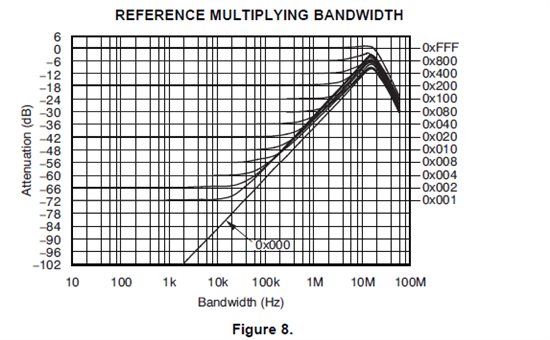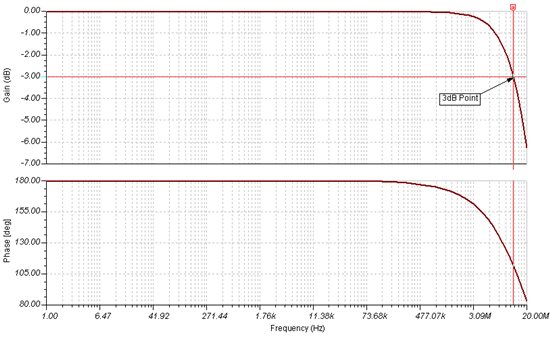Junheng,
I'm not very clear on what your application of these two devices will look like. Can you share a schematic or specific design goals? Are you using the DAC7821 in an attenuator application? (i.e. a signal applied at the reference input that is attenuated at the DAC output?). If that's the case, the DAC7821 does not include any output buffer circuitry on silicon, as is typical of multiplying DACs. The device is simply a digital interface and a trimmed R-2R ladder structure. With that in mind, there is nothing in place to purposely limit the bandwidth of the device, but parasitics on silicon will limit the device's bandwidth. This performance is summarized by Figure 8 in the datasheet and is inserted below:
As you can see from the plot, the devices performance as an attenuator radically changes over frequency, and at very high frequency it does not serve very well as an attenuator.
If your interest is in using the DAC7821 to generate ac signals at 2MHz it certainly has bandwidth to create this signal but your precise requirements in terms of SNR, THD, and SFDR may require a DAC with a higher data rate. Additionally, you called out the OPA277 earlier in this thread - I'm not sure if you intended on using this device or not - but it's unity gain bandwidth is at 1MHz so you will not have good success using the OPA277 in this system.
Regarding the ADC in this system, generally speaking a delta-sigma ADC does have a very flat frequency response at near DC. As frequency increases the response will remain relatively flat but there will of course be some roll off, it really depends on the filter architecture and I don't have any information on hand to describe what sort of digital filter is implemented with this device. There is some useful data in the typical characteristics section of the ADS1605 datasheet, though, that show pretty good SNR, THD, and SFDR results with FIN of 2MHz. I do not support delta-sigma ADCs so it may be beneficial for you to post another thread requesting more information about the frequency response of the ADS1605.
The recommended circuit driving the input in Figure 11, the THS4502 is a very wide bandwidth differential amplifier with a unity gain bandwidth of 370MHz, the application circuit itself has a 3dB cutoff at approximately 12.45MHz. See below:

